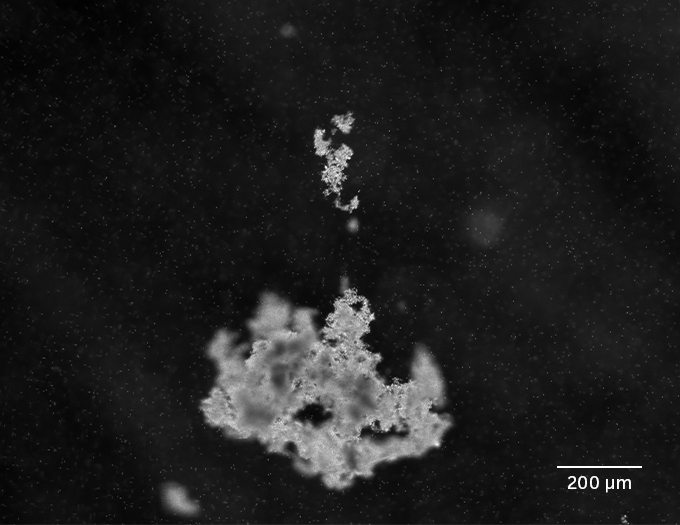A scientific squabble over how to define self-control draws from an unlikely source: A story from Greek mythology.
Sailing home to Ithaca after the Trojan War, Odysseus longed to hear the Sirens’ legendary song. But he knew that was a very bad idea. The Sirens, the goddess Circe had warned, lured passing sailors to their island to kill them. So Circe helped Odysseus form a plan. As his boat approached the Sirens’ island, Odysseus handed crew members balls of wax to plug their ears, and he ordered the men to tie him firmly to the boat’s mast. He told the crew to tie him tighter if he begged and pleaded to heed the Sirens’ call. His plan in place, Odysseus was able to both hear the Sirens and live to tell the tale.
The science is clear. Proverbially tying oneself to the mast — or crafting strategies in advance to thwart temptation — is the optimal way to meet one’s goals. But not all agree that such preemptive strategies constitute self-control.
Social psychologists say Odysseus utilized exemplary self-control. That’s because they tend to distinguish between strategic self-control — that is, the Odysseus approach — and willpower. Willpower would be akin to Odysseus resisting the Sirens’ call in the moment without rope and muscular crewmen.
Some social scientists, though, have started to push back against that linguistic split. Most laypeople use both willpower and self-control to refer to resisting temptation in the moment, says Chandra Sripada, a psychiatric neuroscientist and philosopher at the University of Michigan in Ann Arbor. As such, they view Odysseus’ decision to tie himself to the mast not as an act of self-control but an admission that he lacked it.
“The Odysseus case is a vivid example of how precommitment, preplanning and things like that aren’t called by ordinary people self-control,” Sripada says.
Ivory tower infighting over what does, and does not, constitute self-control might seem like a battle with low stakes. Experts largely agree that preemptive planning is the best way to achieve one’s goals. So who cares if that route to success reflects self-control or something else? All roads, after all, lead to Ithaca.
The issue does matter, Sripada insists. Consider this festive time of year. Social scientists often appear in the media as experts who can help people achieve their New Year’s resolutions. But if those experts are speaking a different language than their audience, their message may not sink in.
And people are truly terrible at meeting their resolutions. One survey found that roughly 40 percent of people in the United States make resolutions, but less than half complete that resolution by year’s end. Roughly a third of resolution-setters don’t make it past the three-month mark. Another survey showed that most adult Americans think they’ll fail at their resolutions due to, you guessed it, a lack of willpower.
Think of it this way, Sripada says: If he told his patients to exercise self-control to avoid sweets, they would think he meant resisting the immediate craving to eat a freshly baked cookie. They would not think he meant taking the long route home to avoid driving past the bakery.
“You have to communicate with people using a familiar vocabulary,” Sripada says.
Odysseus-izing self-control
In recent years, psychological terms have been infiltrating everyday speech. In the process, words like gaslighting, triggered, narcissistic, toxic, traumatized and flourishing have become diluted and imprecise (SN: 1/10/23).
The term self-control shows that similar mistranslations also occur in reverse. The idea of self-control emerged thousands of years ago. For instance, in The Laws, a book delving into political philosophy, ethics, theology and psychology, Plato asserted that self-control compensated for a lack of strategic planning, researchers wrote in the March 2023 Review of Philosophy and Psychology.
By comparison, scientists entered the self-control discourse relatively recently. Other concepts, such as attention, memory, motivation and desire, have followed a similar trajectory from lay discourse to scientific jargon, says philosopher and cognitive scientist Juan Pablo Bermúdez, a coauthor on the study. “Once [these words] come into the science, they change. Sometimes they change for the better. Sometimes they get muddier. [Self-control] seems to be a case of the latter,” says Bermúdez, of the Universidad Externado de Colombia in Bogota.
To be clear, scientists’ hearts are in the right place. In the early aughts, it was known that people reporting high levels of inner self-control — as measured by responses to questions such as, “I am good at resisting temptations” or “I get carried away by my feelings” — tended to report higher levels of well-being and academic achievement and more stable relationships than the general public. Scientists assumed that people strong in self-control were simply better than others at muscling through temptation. How, they wanted to know, could others strengthen that muscle?
But then research began to emerge that challenged that framework. In one study, researchers analyzed the results of about 100 self-control studies of almost 33,000 participants. People who scored high in self-control were no better than others at resisting temptation in the moment, those scientists reported in the February 2012 Personality and Social Psychology Review. Instead, such individuals reported having established habits or routines.
In another study, researchers pinged over 200 people on beepers several times a day to measure their desires in real time. Individuals who scored high in self-control reported experiencing less temptation and weaker desires than those with lower scores, the team reported in the June 2012 Journal of Personality and Social Psychology.
Those studies led to a seismic shift in the field of self-control, says social psychologist Malte Friese of Saarlund University in Saarbrücken, Germany, who was not involved in that work. “Apparently the people who are good in self-control … don’t inhibit all day long. They do something different.”
Thus began the willpower/self-control split. Scientists began exploring the tools that could help people do those different things — while sticking to the moniker “self-control.” Some research focused on strategies people could call on in the moment to move beyond simple willpower to resist temptation, says Kentaro Fujita, a social psychologist at the Ohio State University in Columbus. For instance, research has shown that distracting oneself or focusing on the negative aspects of a temptation can help people overcome immediate desires.
But with evidence mounting that preplanning à la Odysseus presented the key to long-term success, that’s where researchers focused their attention, says Fujita, who outlined those strategies in the October 2020 Policy Insights from the Behavioral and Brain Sciences. Some tips include linking goal failure to a self-imposed punishment, such as forcing oneself to donate to a loathed organization. Another involves bundling a disliked action — say, running — with a desirable one, such as listening to a favorite podcast.
“This article challenges a common belief: that successful self-control requires willpower,” Fujita and his coauthors wrote.
Commoners missed the memo
But Sripada’s research shows that people who aren’t regularly designing or participating in research studies don’t disentangle the terms willpower and self-control. His team tested how people think about self-control in a study published in the August 2022 Cognition.
In one experiment, the team sought to replicate the Odysseus story through a different tale, this one about a man named Mo and his desire to eat less cheese. The researchers had 86 online participants read one of several vignettes. In one scenario — a counterpart to the “tying himself to the mast” story — Mo gives his block of cheddar to a roommate so that he won’t eat it later. Despite begging and pleading for his cheese the next day, the roommate denies his request.
In an alternate scenario, Mo doesn’t preemptively hand off the cheese. Instead, when the roommate asks if she can use his block of cheddar to make a sandwich, Mo gives it to her despite wanting it for himself, thus overriding his strong craving. That is, he resists the cheese’s Siren call.
The team then asked participants: “How much self-control did Mo exercise in order not to eat cheese?” Respondents could answer from 1 for “none” to 7 for “a lot.” Participants rated Mo high in self-control when he gave his roommate the cheese in the moment, the team found. But, they rated him low in self-control when he “begged and pleaded” for the cheese the next day. In other words, lay people have not received social psychologists’ memo that strategic planning constitutes self-control — and not just any self-control but the best kind.
The study shows that self-control researchers have not done enough to investigate laypeople’s understanding of self-control, says Friese, who was not involved with the study. “We have our own terminology and we are doing research based on that terminology, but it’s not really aligned with what laypeople may think.”
That mismatch makes it hard for scientists to communicate the power of preemptive strategies to the public. But expanding the meaning of self-control might also be making it hard for scientists to communicate with each other. “There is no [scientific] consensus on what self-control is and what it is not,” Fujita says. “Depending on who you talk to and depending on their theoretical vantage point, they might be using the same word to mean very different things.”
Psychologists’ expansion of the term self-control runs counter to thousands of years of language use, Sripada says. Researchers, and the public they hope to reach, would be better off finding another term to describe the superior, preemptive, tie-yourself-to-the-mast strategies. And they can stick to the original idea of self-control as equivalent to resisting temptation in the moment, or willpower.
With that in mind, Sripada suggests an alternate phrasing when communicating to people about how to achieve their New Year’s resolutions: “Do you want to keep your New Year’s resolutions? Then don’t rely on self-control. That is a sucker’s game.”













 The widespread use of cannabis (marijuana) and its increased potency are associated with a rise in cannabis-related psychiatric conditions, according to a new University of Maryland School of Medicine (UMSOM) review article that was recently published in the New England Journal of Medicine. It highlights the urgent need for doctors to screen for and treat patients who are experiencing symptoms of cannabis use disorder, which means they are experiencing significant problems from their use of the drug.
The widespread use of cannabis (marijuana) and its increased potency are associated with a rise in cannabis-related psychiatric conditions, according to a new University of Maryland School of Medicine (UMSOM) review article that was recently published in the New England Journal of Medicine. It highlights the urgent need for doctors to screen for and treat patients who are experiencing symptoms of cannabis use disorder, which means they are experiencing significant problems from their use of the drug.






